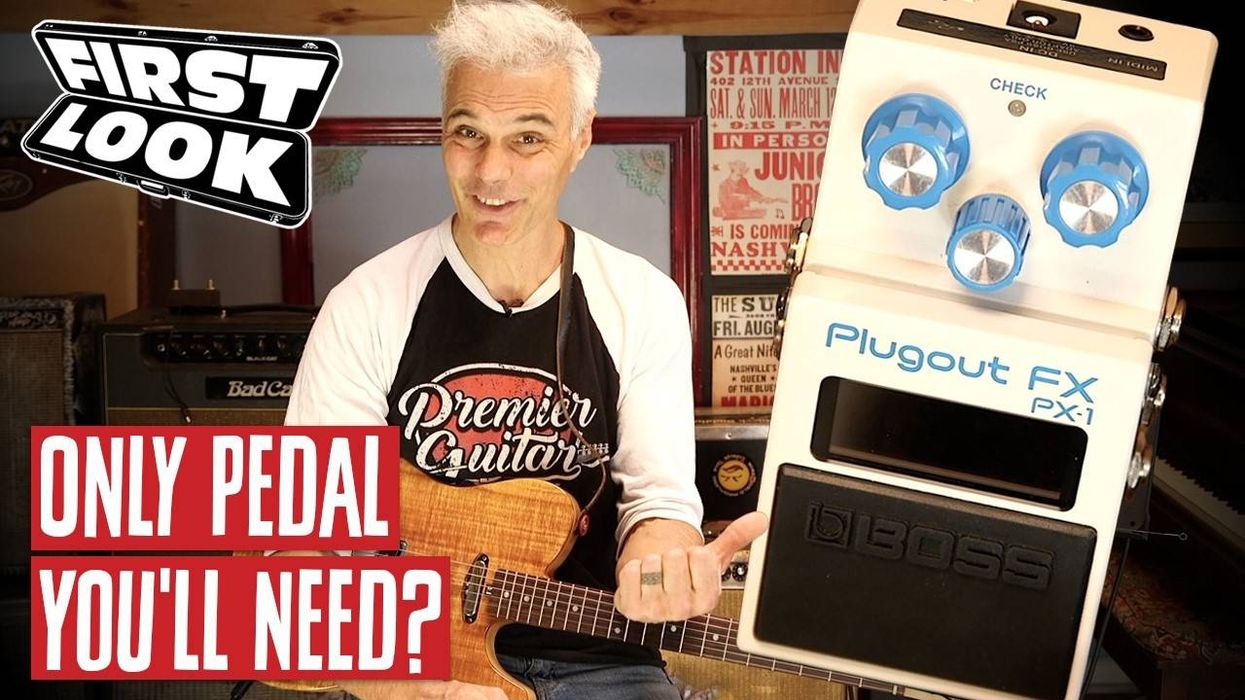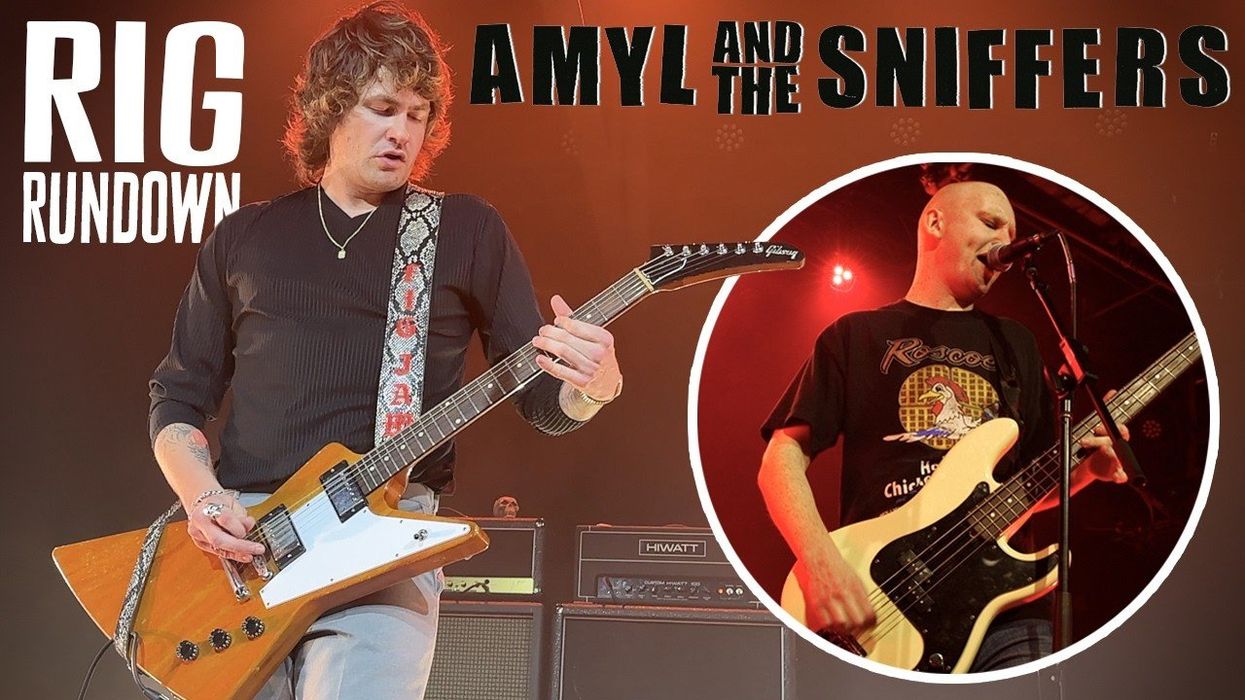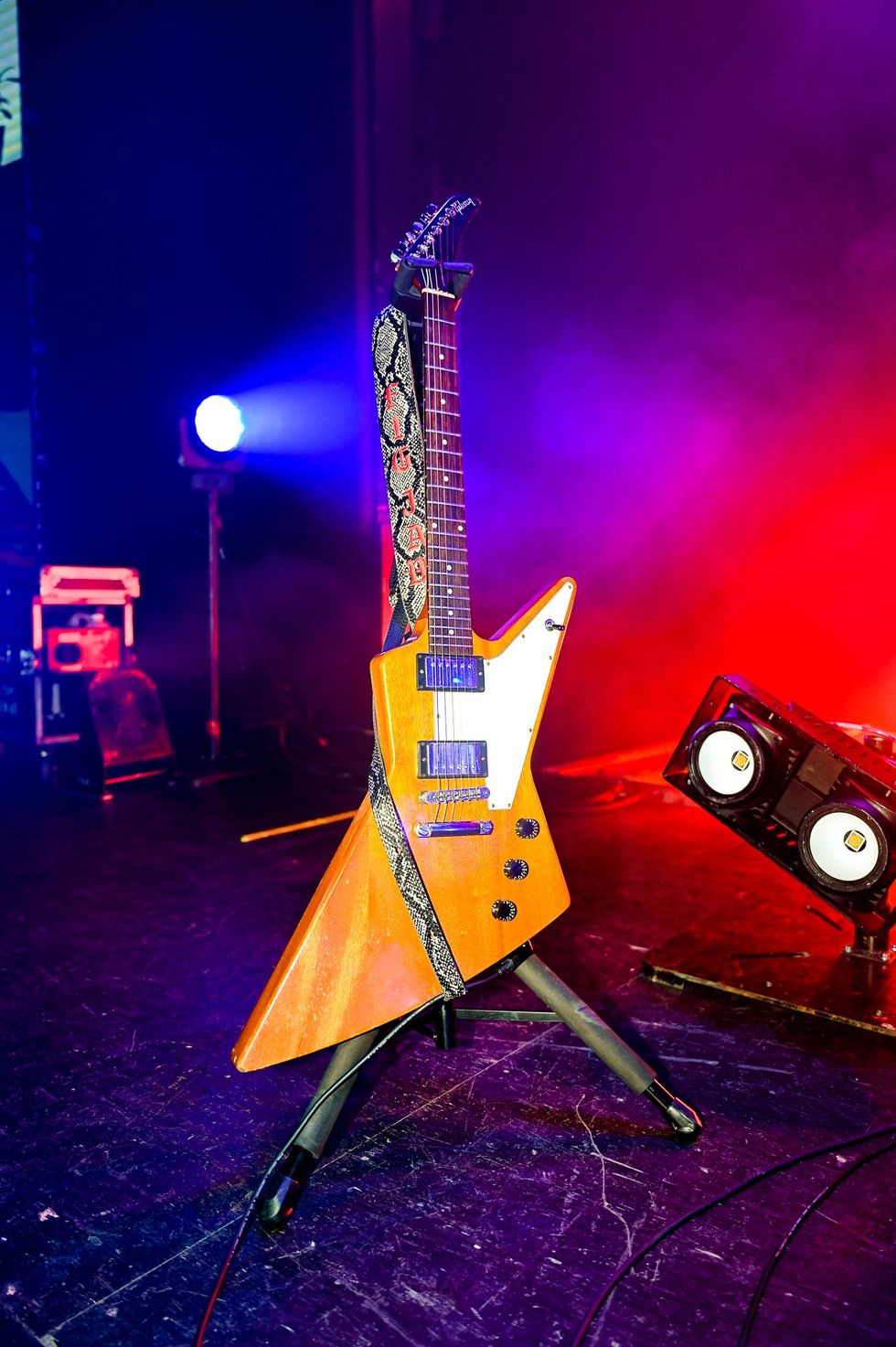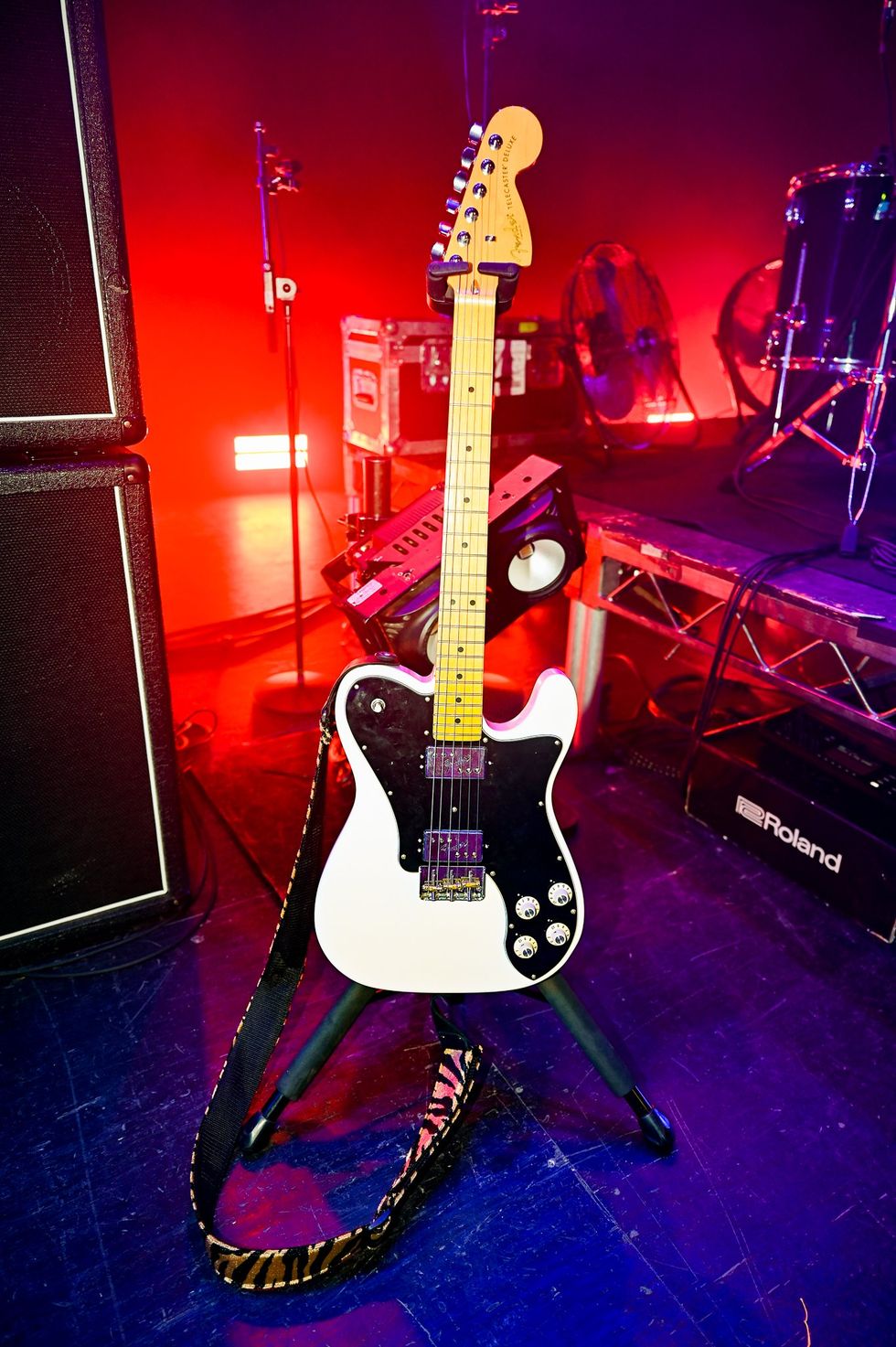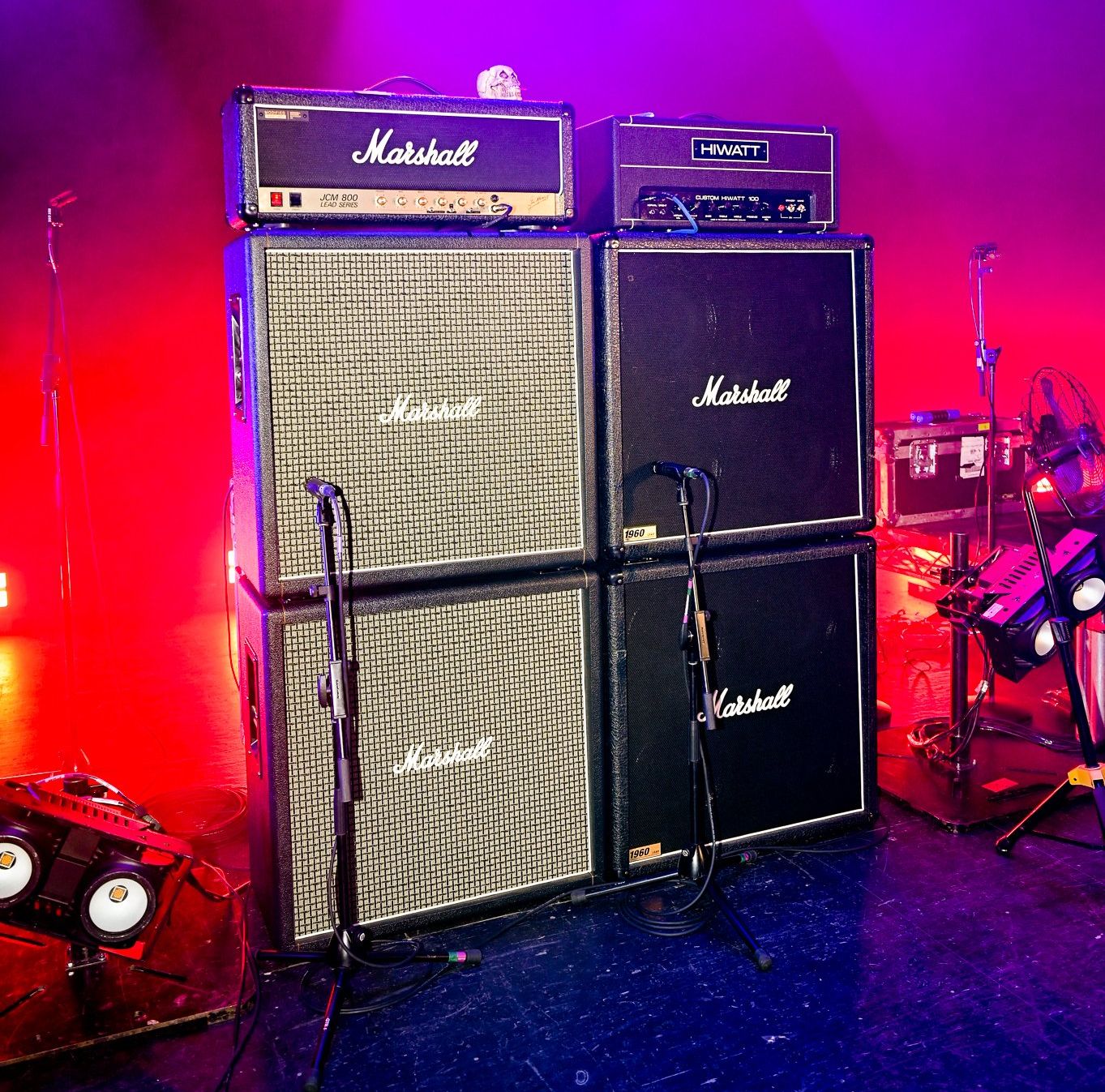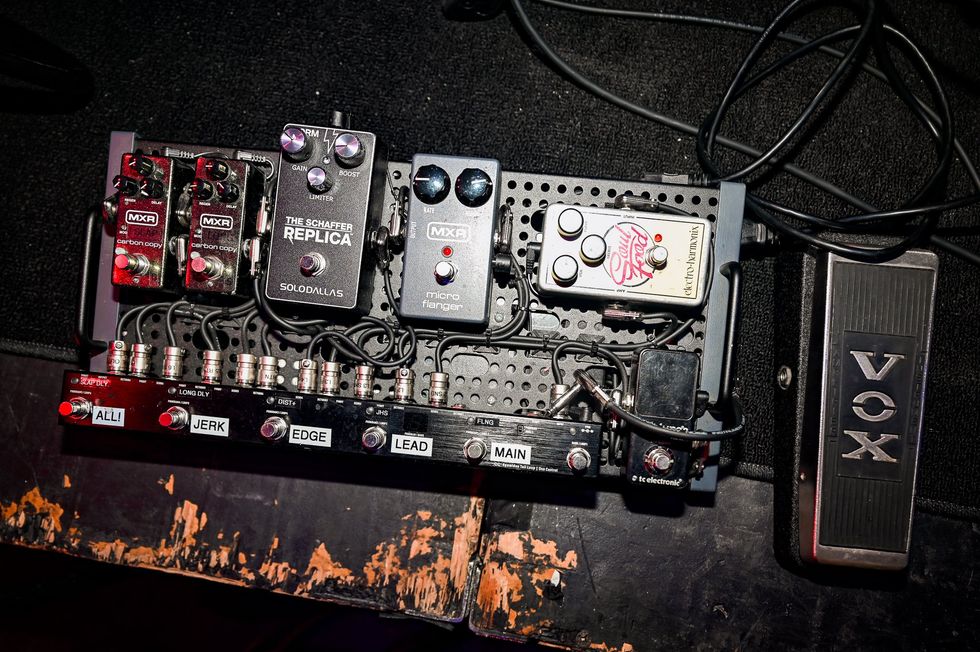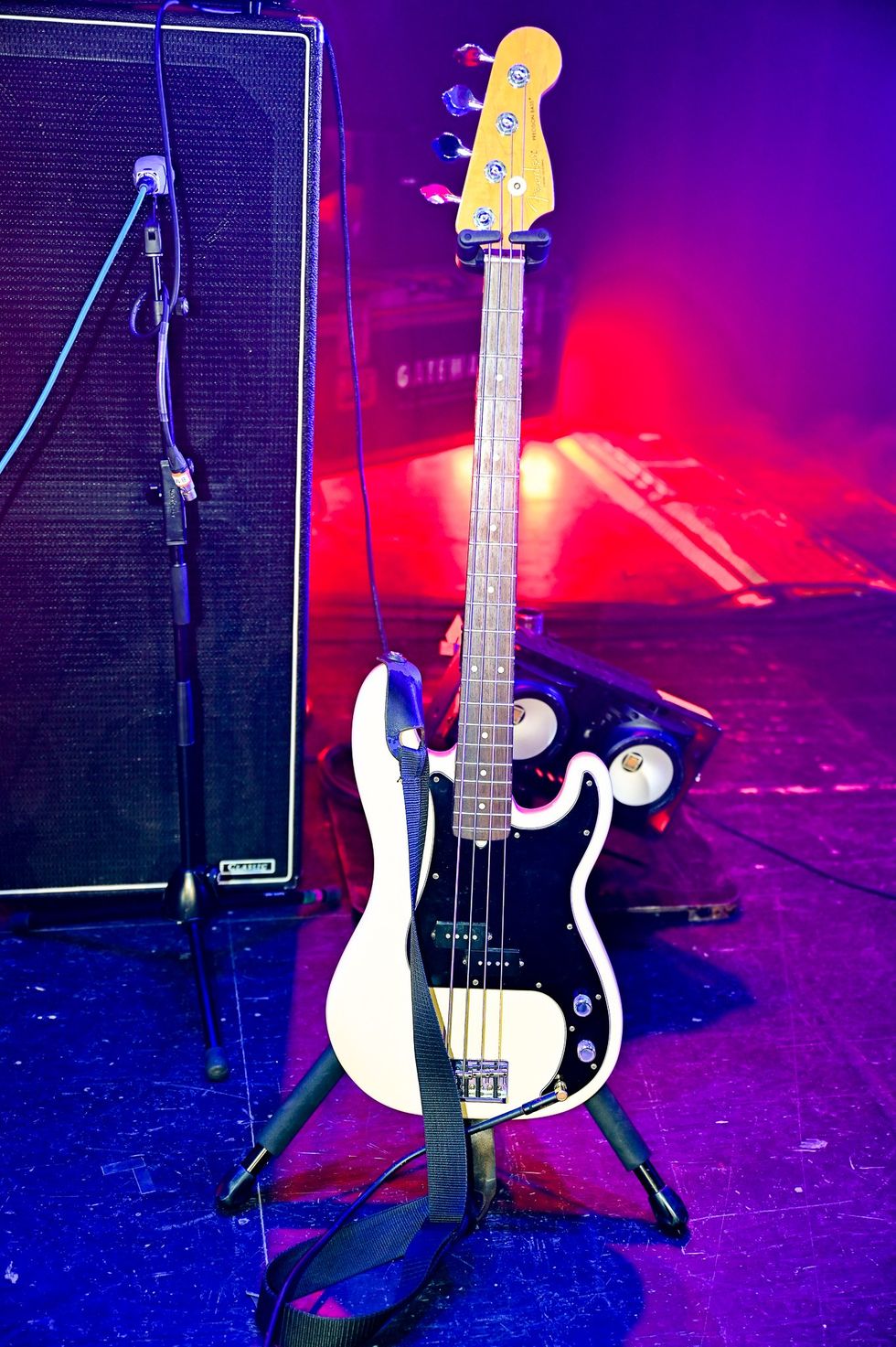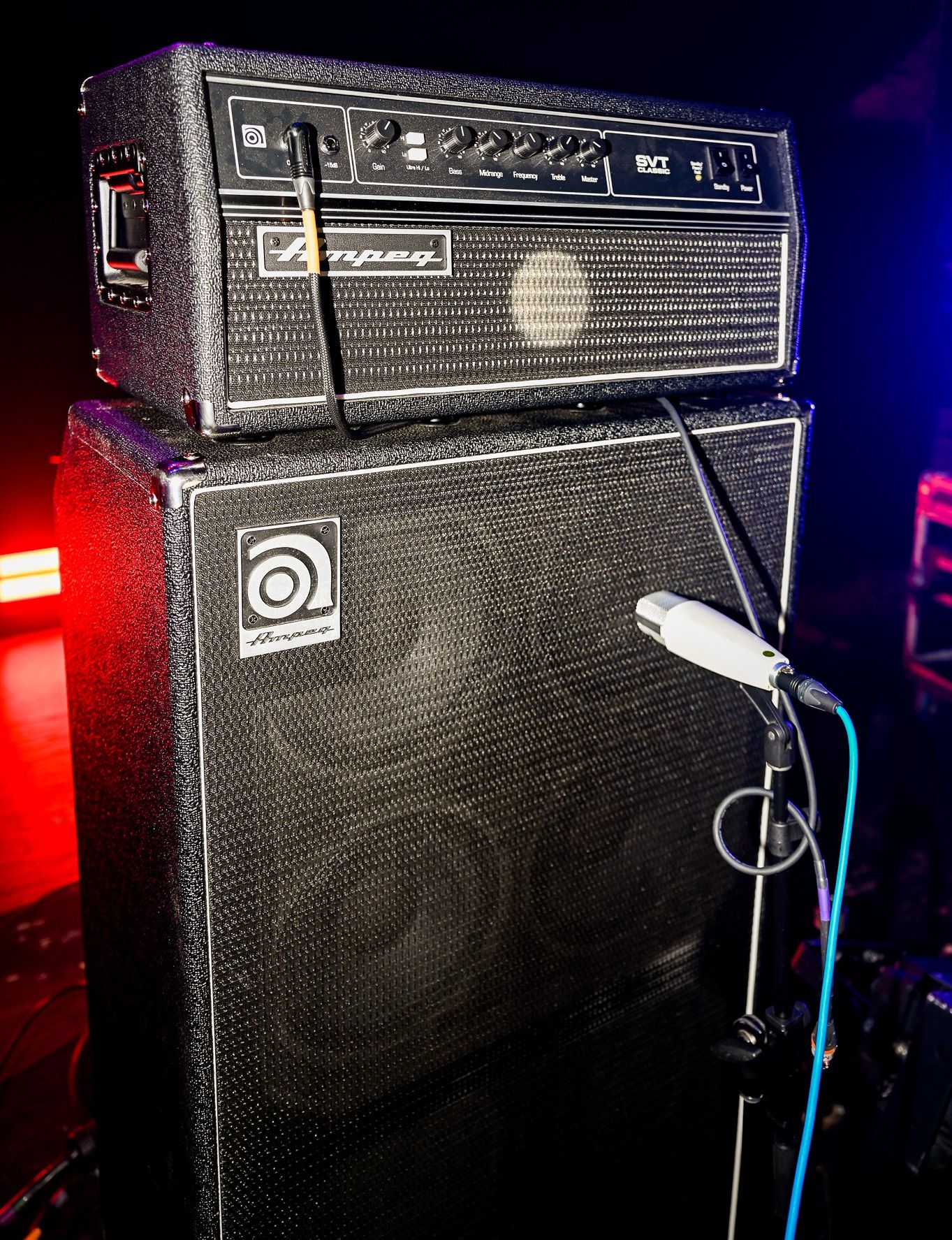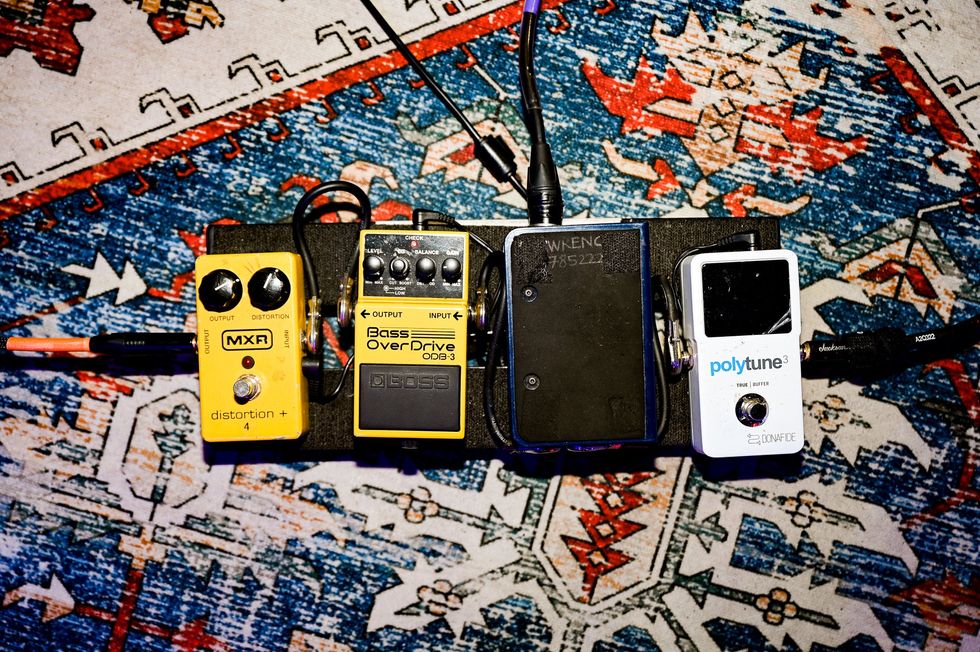The Electro-Harmonix Small Stone was my first weird pedal. Initially I gravitated to the Small Stone because it seemed so utterly immodest, but I soon came to treasure its more subdued settings and its ability to communicate a strange, mysterious melancholy.
Strymon’s new Zelzah, with its ultra-flexible controls and combinable 4- and 6-stage phasing modes, can generate many nuanced variations on these extremes and thousands of colors in between. It also generates immersive chorus and flange tones that make this a very powerful little waveform manipulator.
Purple Waves of Phase
Strymon has remained crafty about maximizing the utility and user-friendliness of their compact stompboxes. On the Zelzah, they use their now-familiar formula of six knobs, two footswitches, and two small toggle switches allocated to two primary functions. Much like Boss pedals, this uniformity in design inspires a certain confidence (at least among players that have previously used small Strymon pedals) that you can dive in and find your way through the forest without first spending a week with a manual. Because this is a Strymon, quality time with the manual is a good idea. There is deeper functionality to consider—particularly if you embrace its MIDI potential. But players keen to get on with creation can dive headlong into the Zelzah’s pleasures and get fast results.
The Zelzah is divided into a 4- and a 6-stage phaser section. The 4-stage phaser side is ostensibly the more streamlined of the two, with knobs for speed, depth, and mix. But the toggle functions makes things interesting fast. The classic voice does nice approximations of old-school analog phasers. But the addition of a barber pole phaser, which gives the aural illusion of phase cycles unwinding endlessly, helix-like, into space, opens up cool compositional possibilities and rhythmic phase effects. The envelope mode is awesome too, not least because it can be set to sit subtly in a mix. The speed and depth knobs double as range and sensitivity controls, and the modest-to-quacky range of effects is impressive.
The 6-stage side of the Zelzah is also simultaneously streamlined and full of surprises. The main attraction here, apart from the thick 6-stage phaser, is a voice switch that morphs between phase, flange, and chorus modes—all of which are excellent. There’s also a 3-position resonance switch that gives all three voices great mellow-to-extreme range.
While Zelzah’s MIDI functionality technically enables hundreds of presets, and you can hook up an expression pedal to effectively move between two preset sounds, you cannot store and recall presets on the unit itself. You’ll either need to delve into MIDI or use an external footswitch with which you can save a single preset. You’ll also need an external switch if you rely on tap tempo. Personally, I find the Zelzah’s basic controls intuitive enough that I don’t need presets or tap tempo much. Some habitual deep divers will, no doubt, be bummed.
Players keen to get on with creation can dive headlong into the Zelzah’s pleasures and get fast results.
The USB jack that enables MIDI connectivity is situated on the crown of the pedal. But there are also true stereo outs as well as a switch that moves the pedal from mono to stereo. Stereo operation is another joy well worth exploring in the Strymon. Just be prepared to allocate a whole week for spelunking these modulation depths.
Motion for Many Moods
The Zelzah’s possible modulation textures start to feel pretty limitless once you get acquainted with the controls—particularly because you can combine the 4-stage phaser with the 6-stage phaser, chorus, and flange.
The 4-stage classic mode is easy to navigate and awash with nice phase colors. The slow and mellow tones are great. So are the fast and intense ones. You hear a lot of detail in these modulations, too, thanks to the pedal’s super-low noise. The potential of the barber pole phaser piqued my interest most. Most barber settings have a frequency-narrowing effect that lends the phase a little more focus, which in turn makes the phase cycle feel more intense. I found a bunch of cool ways to use the tick-tock sway of some of these patterns as rhythmic underpinnings for riffs. And when using the barber pole in compound 4- and 6-stage phaser sounds, you can tune in cool whistling overtones on top. Phasers may be almost intrinsically psychedelic, but the barber pole effect genuinely tweaks your sense of space and time a little more intensely.
The envelope mode, meanwhile, is a riff factory. It twists simple licks in the same way any envelope filter would. But here, the breadth of phase sounds, the ability to keep the effect subdued, and the contouring effect of the phase waveforms take the Zelzah’s version to more malleable and mellow places.
Six-stage phase sounds are generally more intense than 4-stage tones. And with the variable resonance switch available to ramp up the weirdness, you’ll probably want to stop here for your most freakish phase experiences. Even with the resonance switch off, most 6-stage voices feature a detectable whooshiness. And, at mild and high resonances and deeper depth settings, things get ultra-chewy.
The nice chorus and flange effects on the 6-stage side can be made very mellow with the resonance off, but can also assume weird and intense personalities at high resonance and depth settings. They are a fantastic addition to the killer phaser sounds that make Zelzah a practical one-stop modulation shop.
The Verdict
If you’re on the fence between keeping your phase classy and subtle and indulging your wildest modulation urges, Zelzah can accommodate wild fluctuations between those extremes. The compound modulations are an endless well of unusual sounds. And the very rich chorus tones and flanger—and the ease with which you can summon and shape them—make the Zelzah a very fair deal, even if the $349 price initially gives pause.








